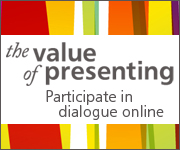 |
| Click to enlarge view. |
I just bought some tickets to a Melissa Etheridge concert. It should be great – we are excited about seeing here live again.
Because the online ticket seller adds fees like a “convenience fee” – basically a charge for the privilege of buying the tickets – I went to the box office in person.
For me all the “convenience” of buying online disappears when it adds $20 to the ticket price. And that’s not all. If I were to buy them online I’d have to choose the delivery method: If I want to be sure to get them delivered, it’s another $14.
Sure, I can pick them up at the venue or I can get them by regular mail (i.e. no guaranteed delivery) without additional charge. But here the “convenience” of buying online falls apart: I still need to leave my house and walk into a physical venue. Today, there should be a free option to download and print the e-ticket, just like with airlines, and some other ticket sellers.
My actual purchase cost me $197.00. Buying it online would have cost $231.00
(Well, arguably only $217 if I pick them up in person; so I went to buy them and pick them up in person at the same time and leave $20 – or $34 depending how you look at it – in my pocket for another performance.)
Nonetheless, this made me ponder other industries where the customer has to first pay for the pleasure of buying something. I’ve come up with:
- Credit cards – even though everyone has a “no fees” option these days, cards with fees are also still very common.
- CostCo membership – the annual membership fee gives customers access to amazingly low prices on all kinds of goods.
- Investing in mutual funds. The transaction fees are usually well hidden – OK, there’s a total lack of transparency. And there is a thing called MERs and they do cost you, also quite hidden from view.
Consumers pushed the credit card industry to include no-fee-cards in their portfolios. Given that many credit cards continue to charge around 20% interest on any balance, you’d think that’s plenty to profit from.
CostCo on the other hand appears to have found a working formula where the value proposition works really well. The fee represents a fair exchange, and might well keep CostCo in business. The whole business model is fascinating and it has made CostCo one of the largest retailers in the world.
As for mutual fund transaction fees, front-loads, no-loads and MERs – my feeling is transparency should be a given in all financial transactions – and I am amazed this has not been assured as yet.
Where else do you pay in order to make a purchase? And what’s the experience like? Does it alienate or bring you closer to the company?






